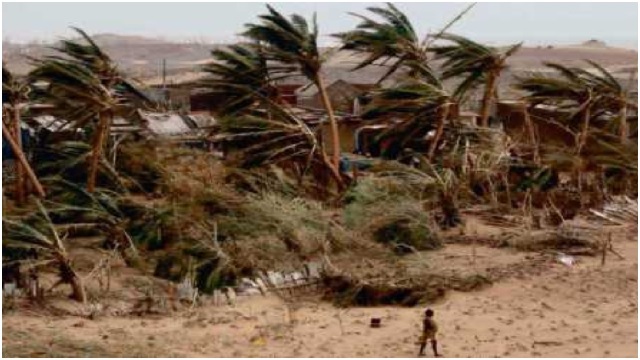Bhubaneswar: On October 29, 1999, a super cyclone with a wind speed of 300 mph had struck Odisha, making it probably the greatest cyclonic disaster ever recorded in the last century. It was first detected when it was at its low pressure stage over the gulf of Siam on the morning of October 24. The storm made its landfall on Odisha on 29 October.
It was a day of fatal miscalculations. A day when death and its nauseating stink spread all over the State. The State government officials had underestimated the super cyclone’s intensity and had miscalculated its path. As a result there were not enough cyclone shelters to protect Odisha’s thousands of people during the storm.
The 1999 Super Cyclone ranks among the worst natural disasters in India. The super cyclone centred over coastal areas of Odisha for three days was accompanied by torrential rain as a tidal surge of about 7 to 10 metre that swept more than 20 km inland. 1999 super cyclone had originated from about 550 km east of the Andaman Islands as a depression.
While the official death toll then was 9,885 people, unofficial sources estimated the toll to be above 50,000. An estimated 1,500 children were orphaned. At least 13 million people, including 3.3 million children, 5 million women and nearly 3.5 million elderly people were affected. 16,50,086 houses damaged, 23,129 houses washed away, 7,46,337.
In Jagatsinghpur district, as per official reports, 7,090 persons had perished in the storm. Unofficially though, the death toll was around 10,000. However, the district administration provided ex-gratia payment to the family members of only 4,261 victims. Many victims were never found or even identified.
In Kendrapada district, 466 persons had perished in the Super Cyclone and the authorities granted compensation money to the relatives of 382 victims. But ex-gratia amount is yet to be given to the family members of 84 dead persons.
The Government of India declared a national disaster in the aftermath of the cyclone, though international appeals were initially unanticipated. The destruction wrought by the cyclone was expected to cause a six-month-long total loss of normal livelihood. Damage sustained to various sanitation infrastructure led to a heightened risk of communicable disease outbreaks, indeed, diarrhea and cholera saw increased incidences following the storm’s impact. Within a month of the cyclone’s landfall, the Odisha state government reported 22,296 cases of diarrhea disorders.
The area’s vulnerability to disease was also compounded by a lack of pre-storm vaccinations, raising fears of a potential measles outbreak. The outbreak of diseases caused by the storm’s effects stabilized by February 2000. For most locations, the initial loss of telecommunication and rail operation was restored within a few days.




 Ms Kalinga
Ms Kalinga